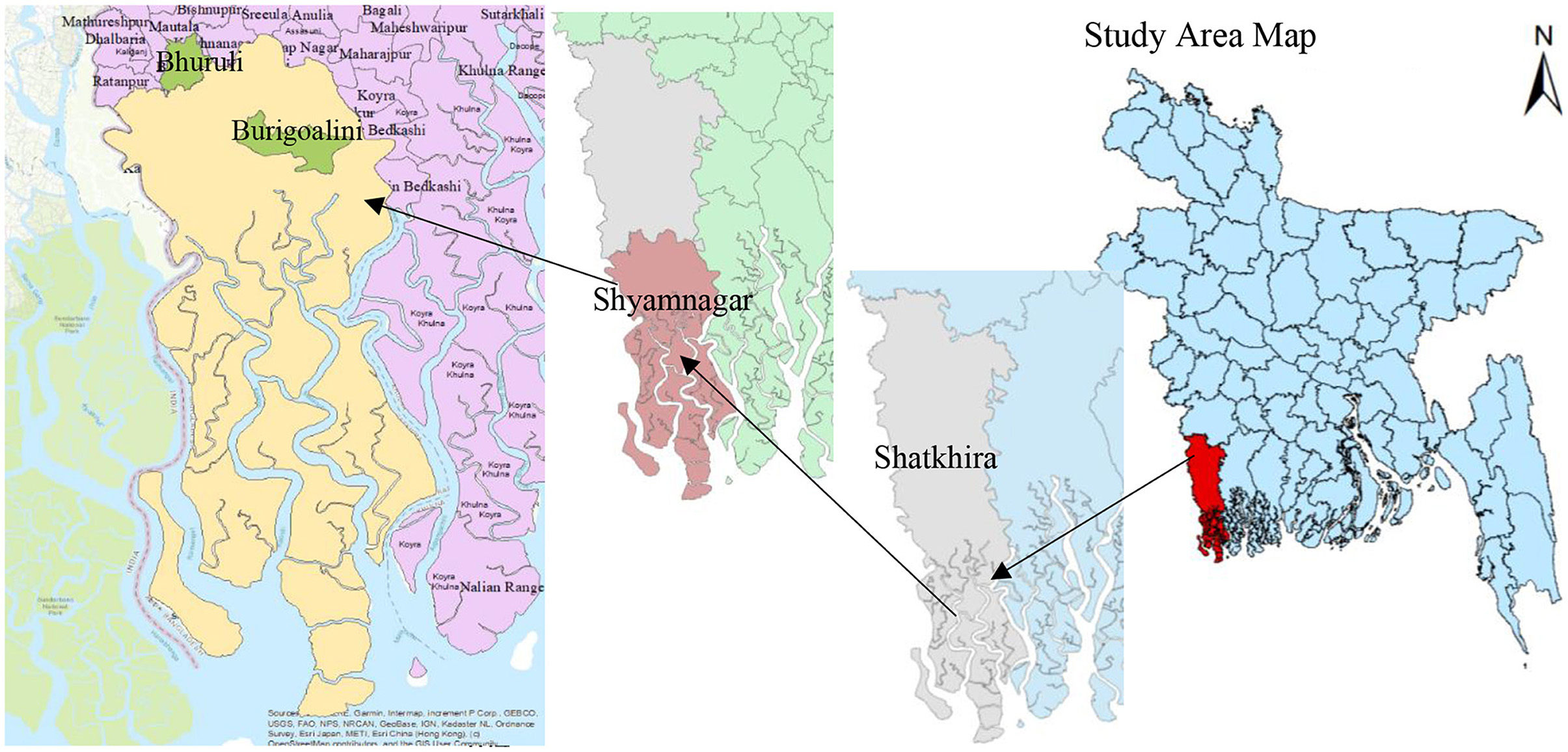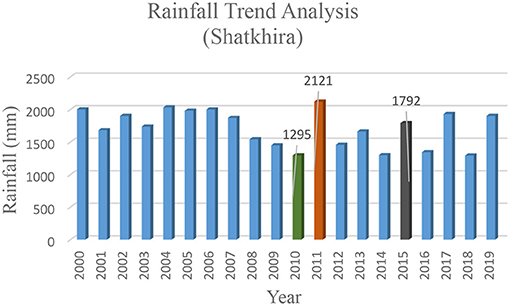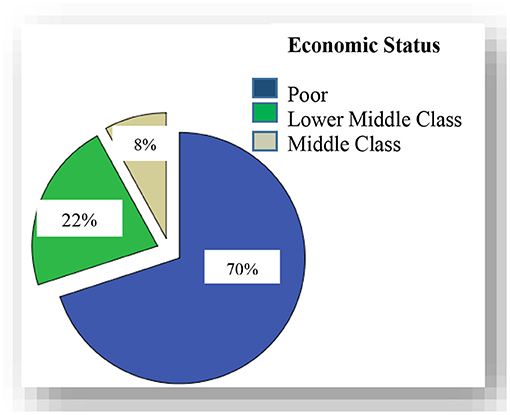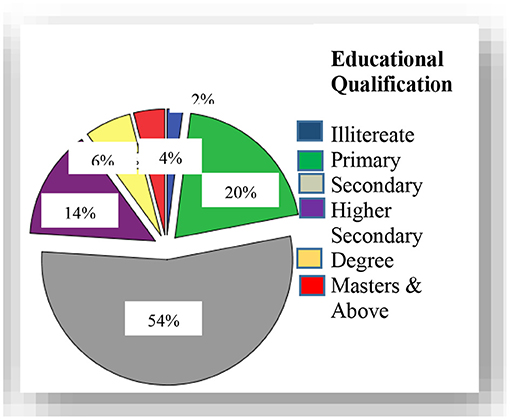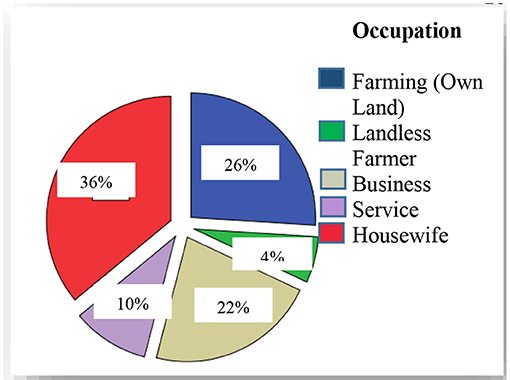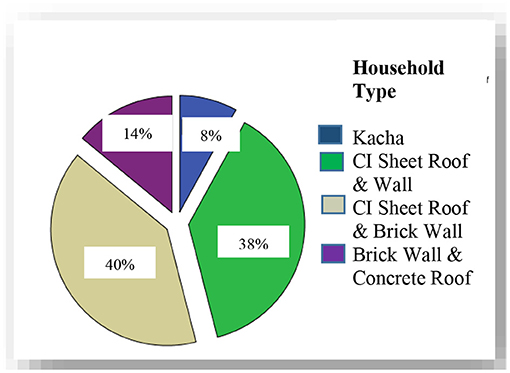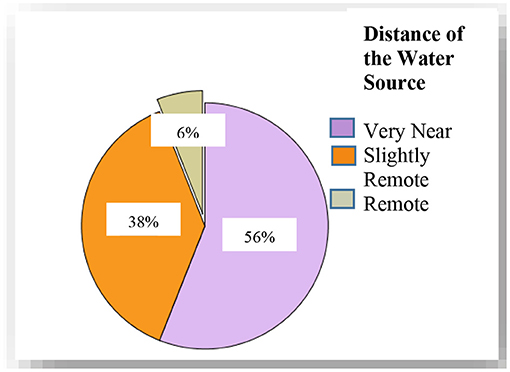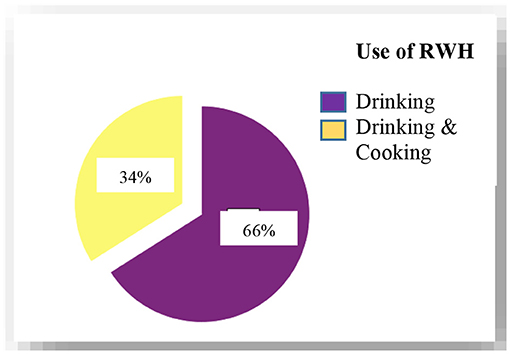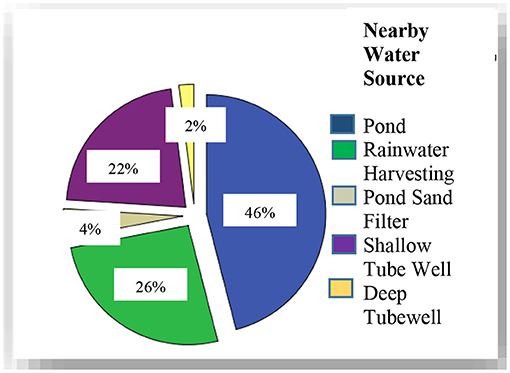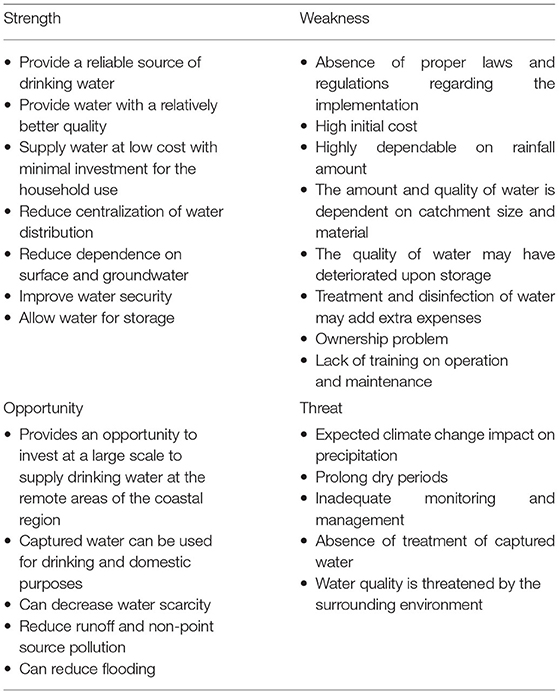- 1Institute of Water and Flood Management, Bangladesh University of Engineering and Technology, Dhaka, Bangladesh
- 2Environmental Sciences Program, Asian University for Women, Chittagong, Bangladesh
- 3Center for Climate Change and Environmental Health (CCCEH), Asian University for Women, Chittagong, Bangladesh
- 4Water Resources Engineering, Bangladesh University of Engineering and Technology, Dhaka, Bangladesh
The Coastal Region of Bangladesh is surrounded by the acute crisis of safe drinking water. Potable water scarcity is an acute problem within the coastal regions of Bangladesh. Salinity intrusion in freshwater bodies, arsenic contamination, and low dry season rainfall are some of the reasons behind this deplorable condition. Such is the case in a southwestern district, Satkhira, where safe drinking water is a mirage for people. In this situation, adaptation and utilization of Rainwater Harvesting (RWH) can be considered as a globally sustainable solution among the various technologies to augment freshwater resources. RWH is becoming an integral part of the sustainable water management toolkit gradually. However, some issues are hindering the success of RWH. The absence of technical knowledge, unawareness of hygiene, economic constraints, and lack of training programs on the usage and maintenance of the technology are major reasons for reducing RWH technology's acceptability. This study assessed existing RWHs from several locations of Shyamnagar Upazila of Shatkhira district, incorporating social, economic, and institutional aspects along with policy and application gaps. A mixed-method approach was adopted for the assessment, which included 20 site inspections, questionnaire surveys among the consumers, focus groups discussions with concerning stakeholders, key informant interviews with local government officials. From the outcomes, Strength Weakness Opportunity Threat (SWOT) analysis was done to indicate opportunities and barriers which hinder the success of existing RWHs. We identified RWH as the most appropriate supplementary water source in this region. The substantial factors which enhanced the acceptance of RWH in the water-scarce area were the accessibility of water compared to other sources, improved livelihood potential, security against climate change, and provision from local government and Non-Government Organizations. Furthermore, there was enough quantity of water to support the total water need in household activities. However, a lack of knowledge and awareness was identified as a substantial social constrain of RWH use. High installation costs and the complex financial mechanism were found to be an economic obstruction to the acceptance of this system. There is a significant gap between policy and implementation at the field level. Identifying the opportunities, issues, and constraints of RWH in the study area allows stakeholders and policymakers to understand which programs, mechanisms, and strategies can be adopted for the sustainable implementation of RWH in Bangladesh. This assessment evaluates the socio-economic outcomes of an alternative water source in the coastal region, emphasizing the prominence of social awareness to sustainable development.
Introduction
Water is an integral part of life and at the core of sustainable development. But an overpopulated country like Bangladesh faces challenges with supplying this resource to meet the basic need of people. Bangladesh has met the Millennium Development Goal (MDG) target of expanding access to safe potable water (Update and MDG Assessment, 2015). But nationally about 13 percent population still use “unimproved” water sources. The availability of fresh and safe drinking water is considered to be the most critical issue in the coastal region of Bangladesh (SIKDER, 2010). Salinity intrusion in the groundwater aquifers and freshwater wetlands is an increasing phenomenon that is augmented by global sea-level rise (Tauhid Ur Rahman et al., 2017). The other extreme is the dry season when the water scarcity becomes severe due to low surface water flow, low groundwater quality, and untenable upstream water extraction (Rahaman, 2005). There is also a principal concern of arsenic contamination of groundwater in some parts of the coastal region (Kinniburgh et al., 2007). This situation is worst for the coastal population because they rely only on surface water and groundwater for drinking and other domestic purposes. As a result, coastal inhabitants are the ultimate victim of acute water crisis for both in terms of quality and quantity (Abedin et al., 2014). The increase in water demand along with the decrease in supply has promoted the development and implementation of many unconventional water sources all over the world. In the coastal areas desalination could be a good choice but its financial and environmental barriers constraints it in many regions. Rainwater harvesting is a process of catching and utilizing rainfall by conserving its runoff, evaporation, and seepage. It increases water availability by ensuring profound water quality (Roy et al., 2007). The process has been successfully applied in many developed and developing countries such as Germany, Australia, Spain, Nepal, India, and the US amongst others. Since 1984 it has been promoted in the coastal areas in Bangladesh to a limited scale for drinking purposes. As rainwater is available in adequate quantity and greater intensity (Nasir et al., 2013) RWH is increasingly becoming an integral part of the sustainable water management toolkit (Ward et al., 2012). However, the lack of maintenance practice and knowledge often turns this water into contaminated water and causes health concerns (Sharma and Bhattacharya, 2017). Several studies have been equipped to access the feasibility of rainwater harvesting. But considering water quality, financial viability, social acceptance, and environmental impacts, the overall performance assessments of rainwater harvesting systems from social, economic, and institutional aspects have not been done yet. This study assessed existing RWHs incorporating social, economic, and institutional aspects along with policy and application gaps. The objective of the study is to analyze the issues, problems, and opportunities against Successive Implementation of Rainwater Harvesting Options to Ensure Water Security in the Southwestern Coastal Region of Bangladesh.
Materials and Methods
Study Area
The study was conducted in Shyamnagar Upazila of Satkhira, which is located at 22.3306°N 89.1028°E which is an offshore area close to the world's largest mangrove Sundarban in the southwest part of the country (Figure 1).
Shyamngar has 46,592 households and a total area of 1968.24 sqkm. It has a population of 318,254 which constitutes 48.21% male and 51.79% female (Population & Housing Census 2011). The main occupation of the male inhabitants is agriculture, shrimp culture, and fishing. The area is exposed to major threats of disasters due to its geographical settings (Rahman et al., 2019). The people in this area are suffering from a shortage of drinking water since the cyclone Aila in 2009 (Rahman et al., 2021). During the disaster, high tidal surges contaminated all freshwater sources with polluted saline water devastated the major drinking water sources. The monsoon rainfall starts earlier in this region by the end of April and continues up to September, and the rainfall is much higher than the average rainfall in the Khulna region. The study attempts to assess the performance of existing RWHs in Bhurulia and Burigoalini of Shyamnagar Upazila of Shatkhira district and find out the opportunities and challenges. The union was selected since the problem of drinking water is severely acute.
The trend analysis of total annual rainfall of the recent 10 years of the study area has been shown above (Figure 2). Among 20 years on the dry year, the rainfall amount was 1,295 mm, for the wet year the rainfall amount was 2,121 mm, and for the average year, the rainfall was 1,792 mm. It can be said that the rainfall amount is good enough to serve as an alternative water source.
Methodology
An extensive program for the inspection of existing RWH systems and analysis was undertaken from September 2020 to October 2020 in several locations from Bhurulia and Burigoalini unions in Shyamnagar Upazila.
A mixed-method approach was adopted for the assessment, including;
• Reconnaissance Survey
• Questionnaires Development
• Focus group discussion and Key Informant Interview
• Strategic Policy Research
• Result processing and analysis
First of all reconnaissance survey was done to understand the topography of the study area. The objective of the survey was to quickly obtain basic information for developing an understanding of existing rainwater harvestings in the area. It was also conducted to set an outline of the overall study. The questionnaire survey was conducted among 50 people from 17 different locations of the Bhurulia and Burigoalini union. Among them, 60% were male and 40% were female. Different groups of people like teachers, farmers, caretakers, and housewives have been interviewed during the questionnaire survey and the selection of respondents was random. Focus group discussion was done with 04 different groups from these two unions: small businessmen, housewives, van pullers, and farmers. Key informant interviews were conducted with officers of the Department of Public Health Engineering (DPHE), Wateraid, NGO Forum, chairman, and ward members of the Shyamnagar Union Parisad, headmaster, and school teachers of Bhurulia and Burigoalini High Schools. The interviews served the purposes of both the reconnaissance survey and the main study. To find out the policy and implementation gap, strategic policy research has been done to review existing water policies.
Result
Profile of the Respondent
In the study area, the household population varied between 2 and 11 members, with an average household size of 5.68 persons that were comparatively higher than the national average household size. The national average household size in Bangladesh is 4.5. It was found from the field observation that 70% of the respondent are poor who have a monthly income of <10,000 BDT, 22% are the lower middle class who have an income range in between 10,000 and 30,000 BDT, and 8% people belong to the middle class who have income in between 30,000–70,000 BDT (Figure 3). Among the respondents, about 2% of people have never been to school (Figure 4). The remaining 98% of the households are literate in different levels, and only 6% are found to graduate and from university and 4% are found to have higher studies. It indicates that the educational profile of the area is gradually uprising. The occupation (Figure 5) of the majority of the respondents is housewives (36%). This is because the maximum of women is housewives, but there is a variation in men's occupation. The remaining working people are engaged in different activities. In the study area, 40% of households are semi Paka (CI sheet roof and brick wall), 38% are of CI sheet roof and wall, and 14% are Paka (Brick wall and concrete roof) (Figure 6). Motorcycles, auto-rickshaws, and vans are s used for transportation.
Water Source and RWH Related Response
From the response of the people interviewed, most of the people have water sources in <0.5 km of their residence (Figure 7). Most of the people (66%) use rainwater only for drinking. Other people use it both for drinking and cooking (34%) (Figure 8). For other domestic uses, they rely on other water sources. The maximum respondent (46%) mentioned they use pond water for various purposes as it is mostly nearby. 22% have a shallow tube well. 4% of the respondents use pond sand Filter as the nearby source (Figure 9). The people of the study area are in an acute crisis of saline-free drinking water. That's why 100% of them showed satisfaction with the quality of rainwater.
Strategic Policy Research
Public policies are guidelines in a broader perspective, incorporating achievable course or plan of action providing obstacles to overcome and opportunities to utilize that relate to a given environment and targeting to succeed in a goal or realize some objectives or purposes.
Intending to promote rainwater harvesting within the country, an exclusive policy in this regard is yet to be formulated. However, there are several other policies associated with water and therefore the environment within which rainwater harvesting isn't highlighted except a few. The water-related public policies are as follows:
1. National Water Policy 1999
2. National Policy for Safe Water Supply and Sanitation 1998
There are many other policies as below, which also relate to water and the environment.
1. National Environmental Policy 1992
2. National Forestry Policy 1994
3. National Fisheries Policy 1998
4. National Agricultural Policy 1999 and
5. Industrial Policy 1999
Among these policies, within the national policy for safe water and sanitation 1998, Safe water was defined as the withdrawal or abstraction of either ground or surface water as well as harvested rainwater together with subsequent treatment, storage, transmission, and distribution for domestic use. In National Water Policy 1999, policies in various aspects are set with a view to improving water resource management and environmental protection. In article 4.15, the importance of research and information management is emphasized to inform its stakeholders like specialists, planners, professionals, politicians, and the general public to make proper decisions about appropriate technology and options to strengthen the goal and significance of the policies.
In this regard, the government has taken the initiative to promote the involvement of both public and private sectors to develop appropriate technologies and measures for the integrated use of all waters, including rainwater.
Analysis and Findings
Social, Economic, and Institutional Analysis
Though RWH is one of the reliable water sources in the water-scarce areas, some issues hinder its successful implementation. From the social perspective, there is a lot of issues and opportunities regarding rainwater harvesting. Rainwater harvesting can promote significant water supply and savings in residences in coastal areas. But in most cases, people's knowledge concerning RWH use and utilization is insufficient and obsolete, which obstructs the benefits of rainwater harvesting. That augment the lack of acceptance, motivation, and involvement among users. Topographical and hydrological information is confidential in most cases. That is a huge barrier in the planning, design, and implementation of rainwater harvestings.
The initial cost of rainwater harvesting systems is dependent on the type of catchment, conveyance, tank size, and materials. The implementation cost of an RWH system may be high, the long-term operation and maintenance costs are reasonable. Rainwater is safe in most cases so it does not need any prior treatment or quality check before usage. That's why the operation and maintenance of rainwater harvesting systems are easy and cheap.
The technical feasibility of rainwater harvestings is also an important issue. It has been capable of meeting demands for drinking and cooking in most cases. The present analysis indicates that maximum reliability for drinking can be achieved if sufficient rainfall is available throughout the year. But the rainfall amount is unpredictable. Lack of rainfall in dry season may also interrupt the acceptability of rainwater harvestings (Thuy et al., 2019). There is also a significant gap in tank sizing at the field level. There is no correlation between the demand and tank size which sometimes hinders the success of rainwater harvesting. Water quality can be hampered by dirty catchments, sediment accumulation, insects etc. (Mwamila et al., 2016).
In Bangladesh, abundance and scarcity both are realities regarding the availability of water irrespective of quality. Various challenges are to be faced in various tiers right both at the national and individual level to establish a rainwater harvesting system in the rural sector. The absence of long-term government strategies is one of the main reasons against the successive implementation of RWHs.
Gaps in Existing Policies
From the review of the policies mentioned earlier, it's understood that rainwater harvesting isn't addressed much as it would be.
In article 4.3, section C of national water policy 1999, it's mentioned that the Government will regulate the extraction of water within the identified scarcity zones with full public knowledge for sustaining rechargeable shallow groundwater aquifers. Here promotion of groundwater recharging by rainwater might be introduced.
In article 4.8, there might have been a clause mentioning the use of rainwater and groundwater recharging for the industries primarily based on groundwater for its production or manufacturing and industrial process.
In article 4.11, the development of artificial or manmade water recreation facilities depending exclusively on underground water could be discouraged. In limited cases, these could be allowed to develop incorporating rainwater harvesting and recycling of wastewater.
In article 4.12, protection and preservation of environmental resources, particularly groundwater resources, could be emphasized more by encouraging alternative options of water collection like rainwater harvesting and recycling of wastewater, etc.
In article 4.14 section G, incentives for rainwater harvesting could be mentioned together with other steps mentioned to cover the major sustainable and practicing options.
Here, the policy could incorporate provisions of rainwater harvesting in buildings or other establishments where water could not be supplied satisfying their rational demand for which permission is given for groundwater abstraction individually.
SWOT Analysis
The SWOT analysis for the adoption of an RWHS can help toward the development of a strategic plan and prioritize actions needed to be taken in different terms.
From the analysis of existing RWHs from different perspectives, the strength, weaknesses, opportunities, and threats can be summarized as follows:
Discussion
Understanding and acknowledging the water crisis in Bangladesh is now the major challenge for policymakers. This has a challenge for stakeholders and researchers of how to identify alternative water supply sources which will be reliable as well as sustainable. One of the most reliable sources for meeting the challenge could be the proper utilization of rainwater harvesting. The technology is low cost, reliable and safe. It has been used to improve access to water and sanitation all over the world, especially water-scarce regions. But it is still not significantly included in national policies and regulations in many countries like Bangladesh.
Although numerous RWH issues exist in many aspects in Bangladesh, the social, economic, and institutional challenges have been studied. Rainwater is a natural resource but the unpredictable nature of rainfall makes the process a little bit complex. The unavailability of rainwater in the dry season is a major reason for the unacceptance of RWHs. Poor design due to the absence of hydrological data often results in system loss.
Socially there is a lack of awareness about RWH. Indifference occurs due to donations without any reciprocation from consumers. Interaction between donators and consumers is missing. Lack of training programs is also a social issue. These initial costs of RWH systems are unaffordable for most individual households. The unawareness of local government, as well as stakeholders, is a huge institutional barrier.
In the emerging water crisis in areas where considerable rain is available, rainwater harvesting is the next option as a source of water, especially in coastal areas. Promoting rainwater harvesting in water-scarce areas needs both policy and technological support. Though the existing water-related policies endorse the importance of rainwater harvesting this option needs more support to reach the targeted goals in the water sector. Exclusive policy on rainwater harvesting would be the most effective approach while reviewing and revising the prevailing water-related policies incorporating more provisions of rainwater harvesting and bridging the gaps in these contexts, which could satisfy the immediate need. In this respect, institutional development and capacity building are also required for the purpose.
Data Availability Statement
The raw data supporting the conclusions of this article will be made available by the authors, without undue reservation.
Ethics Statement
Ethical review and approval was not required for the study on human participants in accordance with the local legislation and institutional requirements. Written informed consent for participation was not required for this study in accordance with the national legislation and the institutional requirements.
Author Contributions
NA did the field survey, analysis, and write-up. SM generated the research idea and guided the analysis. SU shared his idea and gave guidance on the research. MH did the field survey along with NA and analyzed data. All authors contributed to the article and approved the submitted version.
Conflict of Interest
The authors declare that the research was conducted in the absence of any commercial or financial relationships that could be construed as a potential conflict of interest.
Publisher's Note
All claims expressed in this article are solely those of the authors and do not necessarily represent those of their affiliated organizations, or those of the publisher, the editors and the reviewers. Any product that may be evaluated in this article, or claim that may be made by its manufacturer, is not guaranteed or endorsed by the publisher.
References
Abedin, M. A., Habiba, U., and Shaw, R. (2014). Community perception and adaptation to safe drinking water scarcity: salinity, arsenic, and drought risks in coastal Bangladesh. Int. J. Disaster Risk Sci. 5, 110–124. doi: 10.1007/s13753-014-0021-6
Kinniburgh, D. G., Smedley, P. L., Davies, J., Milne, C. J., Gaus, I., Trafford, J. M., et al. (2007). Chapter 8 The scale and causes of the groundwater arsenic problem in Bangladesh. ii.
Mwamila, T. B., Han, M. Y., and Katambara, Z. (2016). Strategy to overcome barriers of rainwater harvesting, case study Tanzania. J. Geosci. Environ. Protect. 4, 13–23. doi: 10.4236/gep.2016.49002
Nasir, U., Asif, A., and Saiful, I. (2013). Qualitative Analysis of Rainwater from Different Types of Materials in Bangladesh (Issue 0801018). Khulna University of Engineering & Technology.
Rahaman, M. M.. (2005). Bangladesh - From a Country of Flood to a Country of Water Scarcity - Sustainable Perspectives for Solution [Conference Paper]. Seminar on Environment and Development, Entwicklungsforum Bangladesh, Hamberg, Germany. Available online at: https://www.researchgate.net/publication/259526711_Bangladesh-from_a_country_of_flood_to_a_country_of_water_scarcity-sustainable_perspective_for_solution?channel=doi&linkId=5509339e0cf27e990e0e05a9&showFulltext=true
Rahman, M., Ali, M., Ahmed, T., Habib, M., and Hossain, M. (2021). Drinking water supply options in arsenic and salinity affected areas of Bangladesh: a case study. J. Environ. Sci. Natl Resour. 12, 215–223. doi: 10.3329/jesnr.v12i1-2.52039
Rahman, M. M., Alum, M. A., and Haq, S. A. (2019). Feasibility and acceptability study of rainwater use in the southwest coastal area of Bangladesh. Int. J. Eng. Appl. Sci. Technol. 4, 384–389. doi: 10.33564/IJEAST.2019.v04i05.057
Roy, P. K., Das, S., Mondal, M., and Mazumdar, A. (2007). Water Conservation Measures for Sustainable Livelihood of Rural Communities : A Case Study in West Bengal.
Sharma, S., and Bhattacharya, A. (2017). Drinking water contamination and treatment techniques. Appl. Water Sci. 7, 1043–1067. doi: 10.1007/s
SIKDER, A. H. M. K.. (2010). Participatory Multi-criteria Evaluation of Alternative Options for Water Supply in a Cyclone Prone Area. Bangladesh: Institution of Water and Flood Management, Bangladesh University of Engineering Technology.
Tauhid Ur Rahman, M., Rasheduzzaman, M., Habib, M. A., Ahmed, A., Tareq, S. M., and Muniruzzaman, S. M. (2017). Assessment of fresh water security in coastal Bangladesh: an insight from salinity, community perception and adaptation. Ocean Coastal Manage. 137, 68–81. doi: 10.1016/j.ocecoaman.2016.12.005
Thuy, B. T., Dao, A. D., Han, M., Nguyen, D. C., Nguyen, V. A., Park, H., et al. (2019). Rainwater for drinking in Vietnam: barriers and strategies. J. Water Supply 68, 585–594. doi: 10.2166/aqua.2019.054
Keywords: water scarcity, global climate change, rainwater harvesting, water security, sustainable development
Citation: Afsari N, Murshed SB, Uddin SMN and Hasan M (2022) Opportunities and Barriers Against Successive Implementation of Rainwater Harvesting Options to Ensure Water Security in Southwestern Coastal Region of Bangladesh. Front. Water 4:811918. doi: 10.3389/frwa.2022.811918
Received: 09 November 2021; Accepted: 09 March 2022;
Published: 20 May 2022.
Edited by:
Chandrashekhar Bhuiyan, Sikkim Manipal University, IndiaReviewed by:
Tulinave Mwamila, Water Institute, TanzaniaMooyoung Han, Seoul National University, South Korea
Copyright © 2022 Afsari, Murshed, Uddin and Hasan. This is an open-access article distributed under the terms of the Creative Commons Attribution License (CC BY). The use, distribution or reproduction in other forums is permitted, provided the original author(s) and the copyright owner(s) are credited and that the original publication in this journal is cited, in accordance with accepted academic practice. No use, distribution or reproduction is permitted which does not comply with these terms.
*Correspondence: Navila Afsari, navila.afsari@gmail.com
 Navila Afsari
Navila Afsari Sonia Binte Murshed
Sonia Binte Murshed Sayed Mohammad Nazim Uddin
Sayed Mohammad Nazim Uddin Monzurul Hasan1,4
Monzurul Hasan1,4